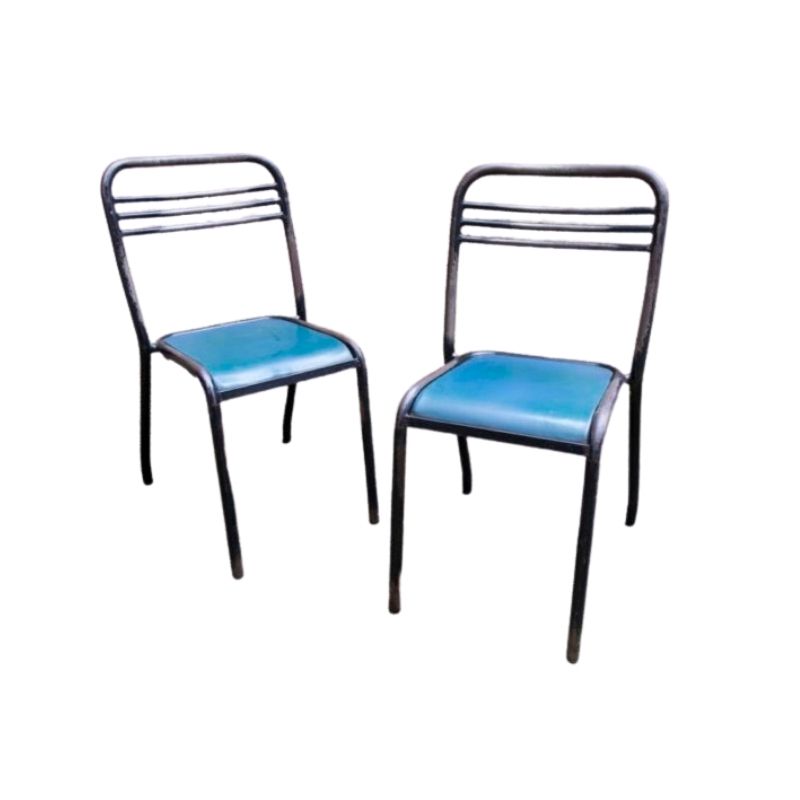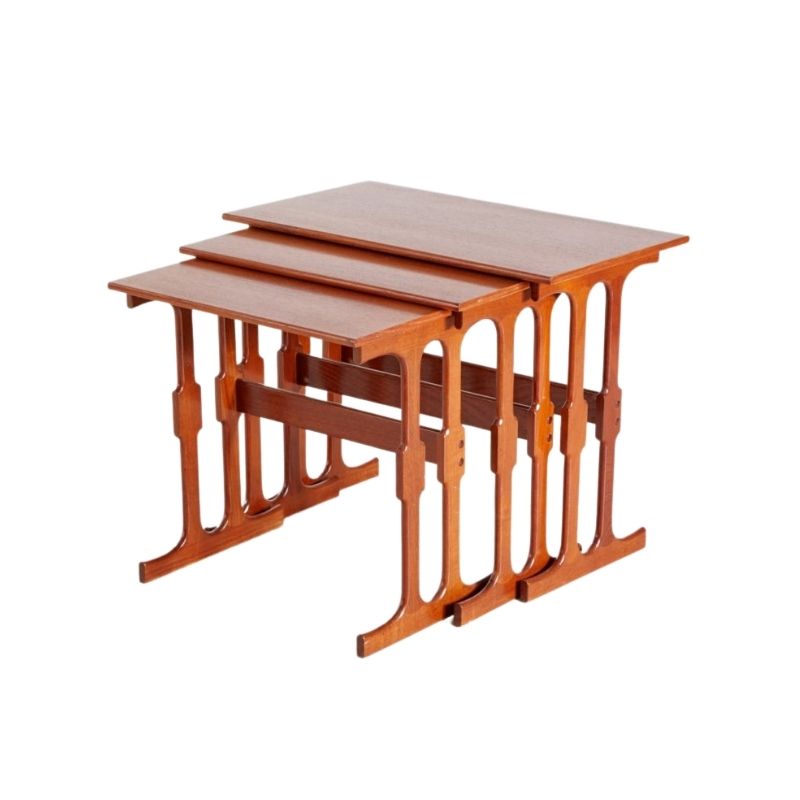pt 3
Again, to refer to the Georgian architecture of Napoleonic Paris, or to the slightly more Florentine style of the original Louvre, there is no doubt that Napoleon was using architecural style to communicate a mythology of how he envisioned the reordering of society and the state that he imposed. And there also can be no doubt that I. M. Pei was in fact practicing some post modernistic mythologizing himself when he imbedded the glass pyramids that thrust up in the midst of the old Louvre.
But again there is this fundamental difference. The glass pyramid, whatever its mythological references may be, IS essentially a geometric form found in nature, where as the old Louvre's architecture is geometric form language wrapped up and subordinated to an ornamentation rooted fundamentally in the human imagination.
I see a crucial distinction here, something architects, designers and critics need to come to grips with in order to better understand just what the hell they have been doing, and so, perhaps be able to do it better in the future.
Heath, regarding a modernist myth...
I know the above, overly long response does not yet address your question about the modernist myth you describe. As you can tell I struggled awkwardly with just explaining how I am trying to use the word "mythological" in my comments. Now I will attempt to address your comment: didn't modernism, despite its heavy emphasis on geometric form language evolve into yet another mythology suffused with a near messianic mysticism regarding its potential to improve and reorder the world.
First, I agree with you that many moderns did act with a kind of messianic mysticism at times, and I do think that many persons in the recent modernist revival, attribute to it some not entirely logical and persuasive purposes. But having said this, I would characterize what we both note about the Modernists more as a shift from an early philosophy for a new architecture to an ideology of architecture.
Philosophy is hopefully, systematic thought about what we are and what we do. As Koen has pointed out on a number of occassions, they early Modernists had a significant philosophical foundation for what they tried to do. You can fault it for flaws, but it was there.
The problem was (and often remains IMHO) that that philosophy did not evolve in to a perpetually regenerative rexamination of its own principles, postulates, and outcomes that could maintain it as a working philosophy animating the disciplines of architecture and design.
Instead, the philosophy, like so much philosophy of the 19th and 20th Centuries (and perhaps of all centuries), atrophied into ideology.
pt 2
Ideology is a tautology of thought that is true because it is true. Put another way, it is not a philosophy based on rational inquiry that seeks to accept or reject or modify itself when it does or doesn't work. An ideology is what one asserts when one has decided that there is no more insight to be gained on the subject by philosophical inquiry. Neocons believe elites should rule because the masses are not capable. They are not open to discussing the masses ability to rule themselves without elites. Elites are assumed superior. End of discussion. Ideologues may seek to proselytize for their ideology by dressing it up with mythology, but mythology and ideology are different things.
I would say that the modernists started with a philosophy and became ideologues in too many cases and so the movement became moribund as a result.
I would say that post moderns embraced mythology and suffused modernist form language with a mythology of irony. They did so largely by historical revivals of ornament from many different periods.
Does this answer your question at all?
I am not saying I am right. I am saying this is my best effort at trying to answer your question, as you pose it.
Heath...
I am blessed with the ability to think as I write and write quickly. I assure you I get my share of time at the beach. 🙂
Now, as for you, may I recommend English tea. It took me a long time to discover Engish tea as a libation of merit. P.G. Tibbs Gold. And once you modulate the right time of day for it (first thing in the morning for me), and master associated sugar and dairy preferences (I am a two lump with half and half man) press on to Barry's Gold tea from Ireland. I believe these will introduce you to a proper mellowness that will let you get on with your posts and allow you more garden time. 🙂
Great learning from you and I look forward to hearing more on this topic.
Next day and time to Assess De Stilj building image...
Certain architectural form languages fit certain building technologies and building standards than others, at any given time. Clearly, Bauhaus's form language, and the form language of Le Corbusier were much more embraceable in an age of concrete and steel and glass and the building standards that preceeded and evolved from them than were De Stilj's form language.
De Stilj's form language, as I have contemplated it recently, seems much more conducive to modular, even prefabricated construction, an idea that flourished for a time early in the 20th Century, and periodically afterwards, but which has always ended still born because of the ability of wealthy players, constractors, and building trades to perpetuate their primacies via the zoning and planning processes in balkanized municipalities across states and across the globe.
Pre fab modular buildings can never achieve the economies of scale their process promises until zoning and planning regulations can be sufficiently standardized to permit one to throw these things up in any city and in any neighborhood in say the USA.
You would not see mass produced cars if every city and neighborhood had different design and engineering standards about what kinds of cars could be owned and operated in each city. Hence, Dwell's dream of prefab modular housing becoming ubiquitous hinges on a Federal overlay on the zoning and planning process that forces cities and towns to accept these prefab modular homes. the existing real estate industry and its constituent sub groups and banking and insurance allies have proven one of the most difficult to change lobbies in usa history...same in other countries also. its just the nature of the game. the military industrial complex has proven even more intractable. despite having no discernible enemies, we maintain an ever increasing military force structure. in fact, as we get rid of enemies, the military industrial complex reputedly "develops" new ones to continue to justify their existence. it is just the nature of that game, too. strategic hegemonies in all paths of human activity have inertia and a desire to grow indefitinitely until another hegemond with greater whammy puts a stop to them.
pt 2
All of this is a long way around the barn to say that in the current era where there is yet another push toward manufactured, prefab buildings for a wide variety of motivations (some sensible, some stupid), I believe De Stilj form language could be revived and advanced as a form language quite fitting to modular, prefab housing. The adaptation that would have to occur, however, is that some bright architect, or group of them, coupled with a bright group of engineers, would have to converge and figure out how to integrate the idea of infrastructure, especially internal infrastructure (a good bit of green Dwell type prefab modular seeks to escape the external infrastructure) into the De Stilj form language in a rational, efficient and pleasing way. The Bauhaus folks were pretty practical about infrastructure from the get go. They just said let's make the infrastructure part of the architecural form language. They could do that because they were interested in creating spaces, not surfaces. Hence, they could use infrastructure to sculpt spaces just as they did the geometric forms and glass curtain walls and shaped concrete forms to define the out boundary of the space.
De Stilj just wanted to talk about forms. They never succeeded in buildings much beyond Rietveldt house, because it was always concerned with the "design" of the exterior of things and how that exterior contributed to a look and a function. When one looks at any De Stilj design, there is no infrastructure. It is all structure. As a result, De Stilj is necessarily ill suited to buildings and products requiring lots of infrastructure.
I believe De Stilj could be revived (Post De Stilj?) and altered to embrace infrastructure, but so far I have not seen this being done.
But again, I am hardly definitive on what is being done.
If you need any help, please contact us at – info@designaddict.com









